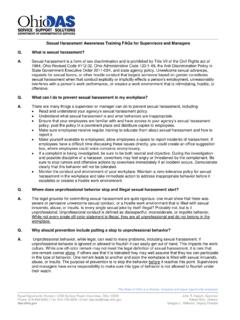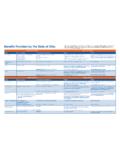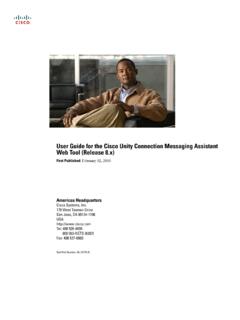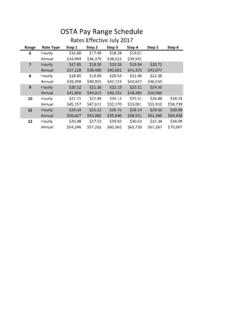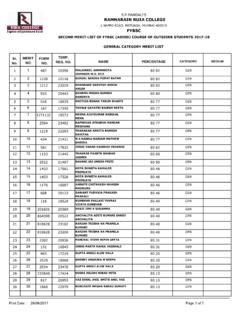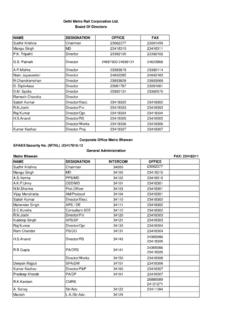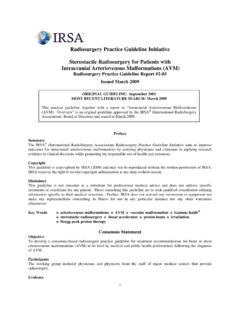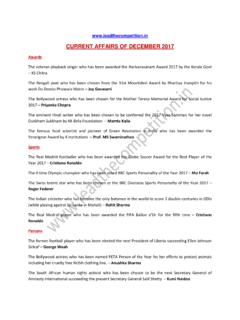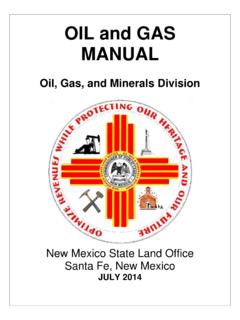Transcription of Succession Planning Manager’s Toolkit
1 Succession Planning . DEPARTMENT OF ADMINISTRATIVE SERVICES (DAS). LEARNING AND DEVELOPMENT. PROJECT MANAGEMENT PROGRAM. 2011. Acknowledgements . Governor of Ohio The Honorable John Kasich Agency Executive Leadership Robert Blair, Director, Department of Administrative Services Michael B. Colbert, Director, Ohio Department of Job and Family Services David Goodman, Director, Ohio Department of Commerce Stan W. Heffner, Interim Superintendent, Ohio Department of Education Theodore E. Wymyslo, , Ohio Department of Health Prepared by Project Team Members Debora Branham, Ohio Department of Health Doug Chaney, Ohio Department of Jobs and Family Services LeOndra Cummings, Ohio Department of Commerce niranjan Kumar, Ohio Department of Health Sherri Lowe, Ohio Department of Education The right person, in the right place, in the right position, at the right time.
2 Special Acknowledgements: To the Lisa Springer, Nelson Gonzalez and the Department of Administrative Services, Learning and Development team for their ongoing support of this project. To Lisa Klancher, Ohio Department of Health, Creative Services for the graphic design of the Toolkit and presentation template. 1. Succession Planning Table of Content Pages Acknowledgements 1. Introduction Letter 3. Setting the Foundation 4. Business Case 4. Common Succession Planning Program Objectives 4. Defining Success Criteria 4. Strategic Direction 5. Conducting the Environmental Scan 5. Succession Planning Eligibility 5-6. Talent Pool 6-7. What is Succession Planning ? 8. Succession Planning Definition 8-9. Why is Succession Planning Important? 9. How to Use The Succession Planning Manager's Toolkit 9. Establishing a Succession Planning Team 10.
3 Defining Communication Strategy and Identifying Key Stakeholders 11. Succession Planning Framework 12. Step 1: Identifying Critical Positions 13-15. Step 2: Assessing Leadership Talent 16-17. Step 3: Developing and Retaining a Talent Pool 18-19. Step 4: Capturing /Transferring Knowledge 20-21. Step 5: Measuring, Monitoring and Evaluating Program Success 22-23. Learning and Development Resources 24-25. Integrating to Competency-Based Human Resource Systems 26. Capturing Lessons Learned 27-28. Summary 29. Appendices: A, B, C, D 30-34. 2. Introduction Letter . Welcome to the Ohio's Talent for Tomorrow and Beyond, Succession Planning Manager's Toolkit . This Toolkit has been developed to assist and support agency leaders in Planning for Succession management. With approximately 16% (6,989 employees) of the State's aging workforce eligible to retire within the next 5 years (2011-2016), Ohio's leaders face an unprecedented challenge.
4 Ohio's government agencies must begin to formulate a statewide Succession strategy to address the departure of critical institutional knowledge. The Toolkit includes information on how to get started with the process and contains the following: Succession Planning Processes, Instructions and Templates Frequently Asked Questions Executive Overview Presentation We encourage each government agency to consider the information and resources that have been made available. Sincerely, Ohio's Talent for Tomorrow and Beyond - Project Team Debora Branham Doug Chaney LeOndra Cummings niranjan Kumar Sherri Lowe 3. Setting the Foundation Business Case The State of Ohio is facing unprecedented fiscal shortfalls, and as a result of these phenomena, agency leadership is being challenged in the deployment and development of its employee base for business continuity.
5 The need for a comprehensive Succession Planning process to identify and mobilize Ohio's resources is more apparent and necessary today due to the pending exodus of 6,989 employees statewide, or approximately 16% of the state's total workforce. With the potential loss of critical institutional knowledge and skills, an improved way to prepare individuals for future roles and responsibilities is clearly needed. Succession Planning is a process that will support offices in identifying critical positions, the current and future competencies ( , knowledge, skills, and abilities) individuals need to be successful in that position, and assessment of current talent to fulfill those roles to ensure business continuity. At the end of this process each agency will have a comprehensive pool of talent to draw upon to meet current and future agency needs to ensure that the right person is in the right place, in the right position, at the right time.
6 Common Succession Planning Objectives To ensure success of any Succession Planning effort, the main objectives should include the following: Identifying significant agency business challenges in the next 1-5 yrs;. Identifying critical positions that will be needed to support business continuity;. Selecting the competencies individuals will need to be successful in positions and to meet identified business challenges;. Developing a pool of talent to step into critical positions; and Reviewing potential position vacancies and capturing the knowledge that individuals possess before departing the agency. Defining Success Criteria In order for a Succession Planning initiative to be successful for supporting business strategies and goals, the following items should be understood and addressed: Succession Planning is closely tied to business strategy and goals.
7 Executive and senior leaders should be vested in the process to ensure its success;. Development of key talent is clearly defined, focused, and managed throughout the process; and Employees understand their role is in the process and know what is expected of them. 4. Setting the Foundation Cont'd . Strategic Direction The first step in determining the talent an agency will need to be successful is to clearly define where the agency is currently and where it may be in the next 1-3 years from a business perspective. The Succession plan needs to strongly correlate with anticipated challenges the agency may be facing and what talent is needed to successfully address them. Completing an Environmental Scan to identify external and internal business trends is required to fully understand and anticipate the competencies needed to ensure leadership and business continuity.
8 Conducting the Environmental Scan The environmental scan is a leadership exercise to quickly and succinctly define the current state of the agency and anticipate where the agency may be in the next 1-3 years. This exercise is a way to ask leaders specific and challenging questions in topical areas such as: External environmental concerns ( , economic, geo-political, funding, customer expectations, etc.);. Internal challenges ( , restructuring, workforce changes, process improvement, competency deficiency, etc.); and Current agency culture ( , labor relations, values, leadership style). It is paramount that leadership has the right individuals involved in the process to get a complete picture of the agency and its challenges. This will provide the agency leaders with a concise and agreed upon picture of the future, as well as jointly develop action plans on how to address challenges.
9 The results of the environmental scan gives context to Succession Planning activities and helps agency leadership to define the people specific challenges it is facing and helps them to decide how to get started in addressing issues. Succession Planning Eligibility Succession Planning in the public sector may presents challenges which private organizations may not experience. Steps have been taken to modify the current model and expectations from what might be found in the literature geared towards the private sector. 5. Setting the Foundation Cont'd . Some differences may include the following: No Pre-selection or Pre-Positioning State agencies operate under some form of a civil service system and collective bargaining agreement whereby employees are selected for positions based on their qualifications. It is understood in this type of system that no determinations of who will succeed any given person will be made until all qualified candidates are provided an equal opportunity to apply for and be considered for the job.
10 Situations where one individual is "pre-determined" as the successor long before the person being succeeded leaves with no competitive selection process could be considered "pre- selection" or pre-positioning and are to be avoided in the public sector. This is considered an unfair advantage to some over others. However, a distinction can be made when there is situation for an opportunity for knowledge transfer to occur. Transfer Provisions Based on Seniority In the State of Ohio, which has collective bargaining, not all vacancies are filled through a competitive process. Individuals in the same position classification, in the same bargaining union with the most seniority may transfer to a position before any other method of filling the position may be considered, including promotion. Retirement and Employee Privacy Rights It will be helpful in filling critical positions to know exactly when the individuals in those positions plan to retire to better support Succession Planning efforts.
